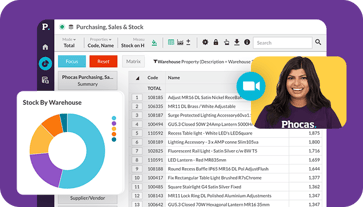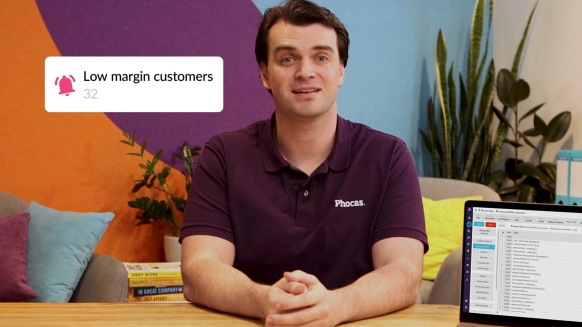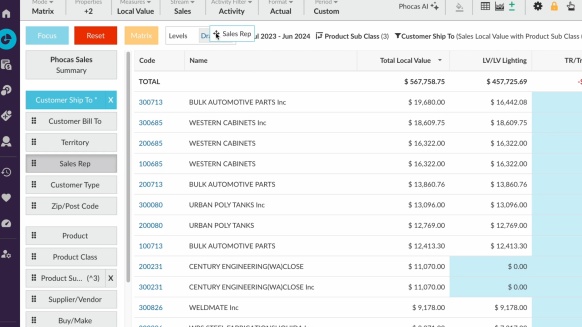3 simple steps to cross selling success
Buyer behaviour has changed – customers are more demanding and more empowered with technology, and access to product reviews and pricing information.
Everyone can research products and services and often make up their minds before they get in touch with the company's salespeople or order online — knowing just what they need and how much they want to pay. Customer loyalty is difficult to maintain. Especially when the competition is targeting the same people and ecommerce businesses like Amazon are using its vast resources to undercut prices.
Ultimately, acquiring new customers and driving new sales is becoming increasingly challenging.
So what do you do to make sure your revenue and profit continue to grow? Get your current customers to buy more of course! The concept is better known as cross-selling, and is a sales strategy by which you offer your current customers relevant products or services to complement their purchases in a subtle, useful fashion.
The benefits of cross-selling
The art of effective cross-selling is a widely known sales strategy amongst salespeople, perhaps due to the array of benefits it brings:
Low cost - The costs incurred by any organization for cross-selling are much less than that of new customer acquisition. It is generally believed that acquiring a new customer costs 3 times the cost of keeping an existing customer.
Better customer retention – Your customers stay because they recognize the value you deliver. Cross-selling enables you to increase that loyalty and understanding of your product selection. By offering additional products or complementary items to current products or services leads to improved retention rates.
Immediate sales – Sales from cross-sell opportunities generally happen at the end of the sales cycle. Therefore, the sales happen almost immediately and your revenue is obtained without going through the complete sales cycle.
Despite the benefits of cross-selling, not many businesses make cross-selling a routine practice. Typically, the way sales professionals come across a cross-selling opportunity is if it jumps out at them, perhaps through a customer enquiry. Inadvertently, this means there are potentially other cross-sell opportunities for optimization, and these businesses are missing opportunities to increase sales and build customer relationships.
The difference between cross-selling vs.upselling
Cross-selling and upselling are distinct yet complementary sales tactics aimed at increasing revenue and enhancing customer value. Cross-selling focuses on offering additional or complementary products to what the customer is already purchasing, such as suggesting add-ons or items that are frequently bought together. For example, an auto repair customer buying a head light replacement might also be offered the bulb. On the other hand, upselling encourages customers to purchase a higher-end or more expensive version of a product or service they are considering. While cross-selling aims to expand the scope of a customer's purchase, upselling focuses on maximizing the value of the core product or service. Both strategies, when executed thoughtfully, can improve customer satisfaction and experience while driving up the average order value and customer lifetime value.
So what can you do to make cross-selling a sales technique? Here are 3 steps how:
1. Understand the needs of your customer base
The first step to uncovering cross-selling opportunities is to really understand your customers' needs as well as the customer journey. Most business needs stem from a problem the business is trying to solve so it is important that you understand your customer's challenges and you consider new products that can address them. Then the product recommendations are helpful and you are saving your customers time and effort.
By understanding your customers’ needs, you can determine the types of related products and services that can deliver them the value they seek.
2. Keep an eye on customer purchases
Of course, the understanding of your customers’ needs need to be supplemented by data on the purchases your customers are making. You need to know exactly what they are buying to make sure you can cross-sell the right related item to complement their purchases.
3. How it works - identify the gap
When you have the key pieces of the puzzle, i.e., what does the customer need and the purchase history of what they are buying, it becomes easier to determine the gap – the product or service they need that they have not purchased. It doesn’t matter whether they have purchased it from the competition or not purchased it at all, what matters is that your customer is not buying it from you. And that makes it a cross-sell opportunity.
Seems easy, right? It is, if you have all the customer data about purchases. But for businesses that don’t have a complete view of what their customers are buying, identifying cross-selling opportunities is not easy.
The key is to have a tool that can give you complete visibility of your customer’s buying habits, this can be in the form of sales analytics or crm.
A cross-selling strategy within sales analytics software starts with understanding customer purchase history to uncover patterns and preferences. By analyzing trends in similar customers like frequently-bought-together products or identifying commonly purchased add-ons, distributors and retailers can suggest recommendations to align with customer needs. For example, offering a complementary product of a previously purchased item can enhance customer satisfaction by being proactive and saving them time. This data-driven approach boosts the functionality of cross-selling efforts, ensuring relevance and increasing the likelihood of success.
To maximize the impact of cross-selling, distributors and retailers should focus on enhancing the customer experience and optimizing their marketing strategy. Sales analytics tools like Phocas help your sales team identify key opportunities to increase the average order value and conversion rates by targeting customers with personalized offers or incentives. By prioritizing customer satisfaction and focusing on long-term relationships, cross-selling strategies can also increase customer lifetime value, turning one-time buyers into loyal customers.
These insights enable sales teams to use data more effectively, and as they begin to drive measurable improvements to your bottom line, you can incorporate multiple data integrations to refine targeting and maximize results even further.

Empowering businesses with intuitive data analytics, driving informed decisions for growth and profitability. We make people feel good about data.
Related blog posts

Customer segmentation has been around for decades, but in many organizations, it’s still underutilized. Done right, it’s one of the most powerful tools to help sales teams focus their time and energy, optimize resources and improve the customer experience.
Read more
Picture a football coach preparing for the big game. He watches game‑tape, studying player metrics, analyzing every play and using real‑time stats to inform strategy. That’s exactly how sales managers and sales leaders should approach their coaching program—with a data‑driven approach.
Read more
Sales professionals operate in face-paced environments with savvy customers who have a lot of choice. Whether you're in B2B sales or working with consumers, the sales process is challenging with longer sales cycles, more decision-makers and higher expectations for follow-up and advice. To stay competitive, sales reps and sales teams need the best sales tools to reduce administrative tasks and improve sales team performance.
Read more
“Free BI tools trial, business analytics software for free, free BI reporting with AI-powered insights”– these offers are tempting business people all the time especially as new open-source players enter the market and want cut-through.
Read moreBrowse by category

Find out how our platform gives you the visibility you need to get more done.
Get your demo today

